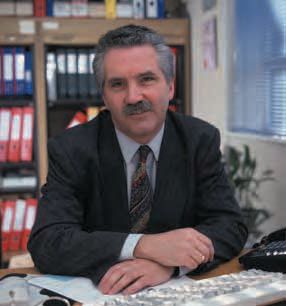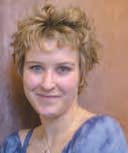
Physiology News Magazine
Primate neuroscience centre public inquiry
The neuroscience research centre inquiry was about planning matters, not science, says Mark Matfield, expert witness for the University of Cambridge
Features
Primate neuroscience centre public inquiry
The neuroscience research centre inquiry was about planning matters, not science, says Mark Matfield, expert witness for the University of Cambridge
Features
Mark Matfield
Executive Director, Research Defence Society
https://doi.org/10.36866/pn.51.33

In reality, this was an inquiry about planning matters, not science. As Keri Page indeed pointed out in her article, the Planning Inspector had stated quite clearly many months before that he was not able to take into consideration any evidence about the science or the ethics of animal experimentation.
Participants
When Stuart Nixon, the Planning Inspector, opened the meeting, he made it clear that everyone would be allowed to have their say. As is standard practice, the two main parties – the University of Cambridge and the South Cambridgeshire District Council – were represented by barristers. There were also three ‘Rule 6’ parties: organisations granted the right to take part in the appeal with legal representation, to present evidence and to crossexamine other witnesses. The main Rule 6 party was a coalition of animal rights groups comprising Animal Aid, the National Anti Vivisection Society, People for the Ethical Treatment of Animals, Uncaged, Naturewatch and X-Cape. The other two were the British Union for the Abolition of Vivisection (BUAV) and Doctors and Lawyers for Responsible Medicine (DLRM).
The Inspector asked all the other organisations or individuals present to indicate if they would like to give evidence or make a statement. These ranged from antivivisection, green and religious groups to local interests. Many of these organisations and witnesses had already submitted written evidence to the appeal.
Opening statements
For the University, Robin Purchas QC pointed out that the proposed centre was not a new development in the green belt, but an enlargement of facilities on a site that the University had used for large animal research for over 30 years. Normally, green belt policy would not allow such an enlargement, but letters from the Minister for Science and the government’s Chief Scientist, as well as a detailed submission from the Medical Research Council, established that the proposed centre was a matter of national importance, which overrides the green belt policy. South Cambridge District Council had accepted this point. Its only grounds for refusing planning permission were that there would be protests outside the site which, because of the roads at that point, would create a ‘serious danger to public safety’. The University disputed this and regarded it as a substantial over-exaggeration of the situation.
The District Council’s barrister claimed that the proposed centre would attract a substantial level of protest, which would result in the roads being blocked and that these blockages would result in serious danger to the motoring public. She also questioned whether there were other sites that could be used for the centre.
District Council witnesses
Following the opening statements, the District Council called its first witness, Chief Inspector Steve Pearl of Cambridgeshire, the senior officer in charge of policing animal rights protests in the county. He described the tactics used by Stop Huntingdon Animal Cruelty (SHAC), with particular emphasis on those protests where roads had been blocked. He also pointed out that, notwithstanding the police observations about likely protest at the site, if planning permission were granted, the police would do all they could to ensure that law and order was maintained.
The District Council called three other witnesses who explained previous observations that the police had made regarding the planning application for the centre, the Council’s reason for refusing planning permission, how protests at the 307 Huntingdon Road site might affect traffic, the potential danger to the public that could result, and examined other sites owned by the University that could be used.
University witnesses
The main academic witness for the University, Sir Keith Peters, Regius Professor of Medicine, explained why it was so important to UK neuroscience for this centre to be built now and at Cambridge, and why it needed to be in reasonable proximity to other neuroscience centres with which it would collaborate.
In an annexe to his evidence, Sir Keith provided a lengthy explanation of the importance of research on primates for both fundamental neuroscience and the development of improved treatments for human neurological conditions. The barristers for the antivivisection groups wanted to cross-examine Sir Keith on this, but he pointed out that the annexe had been written by Cambridge neuroscientists who were not appearing as witnesses. This appeared to upset the antivivisection groups who clearly wanted to argue the case against the use of primates in neuroscience research.
Other witnesses for the University presented evidence on the reasons for choosing the site and the disadvantages of other potential sites, and the lack of potential danger posed by any blocking of the A14 road by protests.
I gave evidence later for the University as an expert witness on animal rights’ protests. I pointed out that there was little evidence to support the police’s conclusion that the protest against 307 Huntingdon Road would be the same style and intensity as the demonstrations against Huntingdon Life Sciences. Even if the campaign were similar to the one against HLS, I argued that there was no basis for concluding that it would cause a ‘serious danger to public safety’.
Turning to the evidence given by Greg Avery of SHAC (see ‘third party evidence’ below), I stated that I simply did not believe him. I explained that SHAC was totally focused on one target, Huntingdon Life Sciences (HLS), and could only have one target. However, it was easy to see that SHAC would claim that the Huntingdon Road site would be a major target as a tactic to influence the enquiry against giving planning permission.
In addition to my evidence about animal rights protest, I was asked to explain the way in which animal research was regulated in the UK and to respond to a number of the assertions made by the animal rights witnesses, and to explain why the standard animal rights claims (on LD50, thalidomide, drug side-effects, etc) were fallacies.
Third party evidence
The Inspector set aside one day for ‘third parties’ to give evidence. These included the majority of animal rights groups present. There were many heart-felt statements of opposition to the proposed primate laboratory and some diatribes against all and any animal research. When Stop Huntingdon Animal Cruelty gave evidence, Greg Avery said that, whatever evidence was presented at the inquiry, he believed that John Prescott would give planning permission for the centre. If that happened, he claimed that SHAC would campaign against it as well as against HLS. He threatened that SHAC would use all their tactics, including blocking the nearby major roads, to stop the centre being built.
For Doctors and Lawyers for Responsible Medicine, Professor Claude Reiss from Paris presented a somewhat rambling dismissal of all animal experimentation in both basic medical research and drug development. However, he lost all credibility when it was pointed out that he had set up a biotechnology company to develop new therapies for AIDS which, he agreed, would have to be tested on animals before they could be prescribed to patients. When the apparent inconsistency of this with his evidence was questioned, he simply shrugged and said that, by then, the drugs would have been passed over to a pharmaceutical company who could do all the animal testing.
When BUAV gave evidence, Director Michelle Thew showed BUAV’s video of its infiltration of a primate research laboratory at Cambridge and submitted the report of the infiltration. In essence her case was that this research was conducted so poorly at Cambridge that it could not be considered to be in the national interest. To challenge this, the University submitted the Home Office Inspectorate’s report into BUAV’s previous infiltration, of Harlan Hillcrest, which included numerous sections saying: ‘BUAV alleged… However, our investigation found no evidence of …’.
After the close of the appeal, the Home Office finally reported on their investigation into BUAV’s allegations about the primate research at Cambridge. As we have come to expect, no evidence was found to support any of BUAV’s main allegations.
The coalition of animal rights groups presented two witnesses of their own: a planning expert who added little to the Council’s objections and Dr Ray Greek, an American anaesthetist who appears to make his living as a professional antivivisection pundit. However, the University barrister displayed a remarkable ability to digest and comprehend neuroscience research by referring Dr Greek to key publications in neuroscience and showing the crucial role of primate research.
Closing arguments
The inquiry reconvened on the 17–19 January 2003 for closing arguments and a site visit. The Inspector indicated that he would send his report of the proceedings, along with all the documents submitted, to the office of the Deputy Prime Minister who would make the final decision. Just when that will be announced is not known, but it seems unlikely that it will be in the immediate future.

Keri Page replies:
While I agree fully with the factual account of the Cambridge planning inquiry presented by Dr Matfield, I would like to comment on his interpretation of my earlier report. I am a PhD student at Cambridge University and sat in the public gallery at the inquiry with the specific idea of seeing how the whole process looked from that viewpoint.
The equal weight in my article given to evidence from anti-vivisection groups and from Sir Keith Peters was not intended to reflect the balance at the inquiry, or its overall purpose, but rather to draw attention to issues that the scientific community might find of interest. My apparent lack of understanding was a deliberate attempt to raise the profile of the debate amongst practicing scientists. Similarly, the open questions at the end were not intended to favour either side of the ongoing dispute but instead to play the role of Devil’s advocate and encourage open discussion of the issues surrounding animal experimentation.
The inquiry Planning Inspector, Stuart Nixon, gave permission for animal welfare groups to present their case – in the name of questioning the assertion of national need. However, as Dr Matfield makes clear, the Inspector had previously stated that science- and ethics-based evidence would not be considered in his final decision. For this reason the University was, of course, not obliged in law to make such a case. Nevertheless, as a scientist, I found it uncomfortable to watch as Mr Wald (Animal Aid lawyer) questioned the usefulness of primate research and described neuroscience as scientific dabbling, while the University appeared to make no scientific case to defend itself. Welfare groups and Cambridge residents in the public gallery where I was sitting loudly accused the University of intellectual arrogance, and complaints of distrust were bandied around. My fear is that, despite the University making a solid case for the centre being built on greenbelt land, it must have looked to the Press and lay people in the gallery as though the University was not confident in defending its science.
It was clear from the start that the inquiry would be widely reported in the scientific and non-scientific press. It would therefore have been reassuring to see the University call upon its wealth of successful research and experience in order to build a watertight case for neuroscience, even if this was not strictly necessary. Ultimately it is important to encourage support for science from the general public as well as from national and local government.
Animal experimentation is a contentious subject for both scientists and non-scientists. In order to air this debate Physiology News welcomes constructive short pieces from anyone who wishes to contribute. Ed
